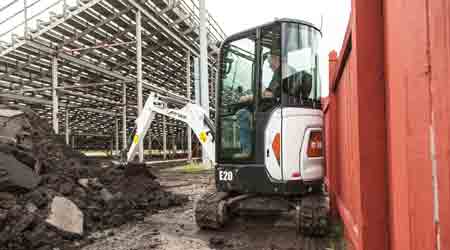Ensure Aerial Work Platforms Match Project Needs
Part two of a four-part article on equipment rental
Aerial work platforms come in a variety of types and configurations that allow managers to match capabilities to project needs. Understanding the capabilities and limitations of the four basic types of platforms is essential in renting a unit for a particular application.
Scissor lifts. These lifts use crisscross supports to lift the work platform directly above the equipment’s wheel base. They are designed for applications that require technicians to raise objects up to 50 feet directly overhead. The size of the units depend on their lift height, but many are designed to fit through standard doorways. One of their major limitations is that they require a clear path overhead.
Articulating boom lifts. These lifts overcome the limitation of a clear overhead path by providing access up and over barriers. Electric and engine-driven models are available with lift ranges of up to 60 feet and out to 30 feet.
Telescoping boom lifts. Similar to scissor lifts, these lifts offer vertical lifts of up to 180 feet directly over its base. Unlike other lifts, however, technicians can use telescoping boom lifts to lower the work platform below the level of the base unit. In some models, articulating extensions provide additional horizontal reach.
Mast lifts. Mast lifts are vertical lifts that offer platform working heights of up to 30 feet. Technicians can operate the units manually, or units can be self-propelled, and many are designed to fit through a standard doorway. Some units can support either one or two workers.
When selecting an aerial work platform for a particular application, managers must consider a host of factors, including the working height required, the weight the platform must support, the size of the platform required to perform the desired tasks, the proximity with which users can position the lift near the activity to be performed, the location of any obstructions between the lift’s base and the activity, and the accessibility of the work site. Managers also must be sure to include operator training in the rental agreement.
Related Topics:













